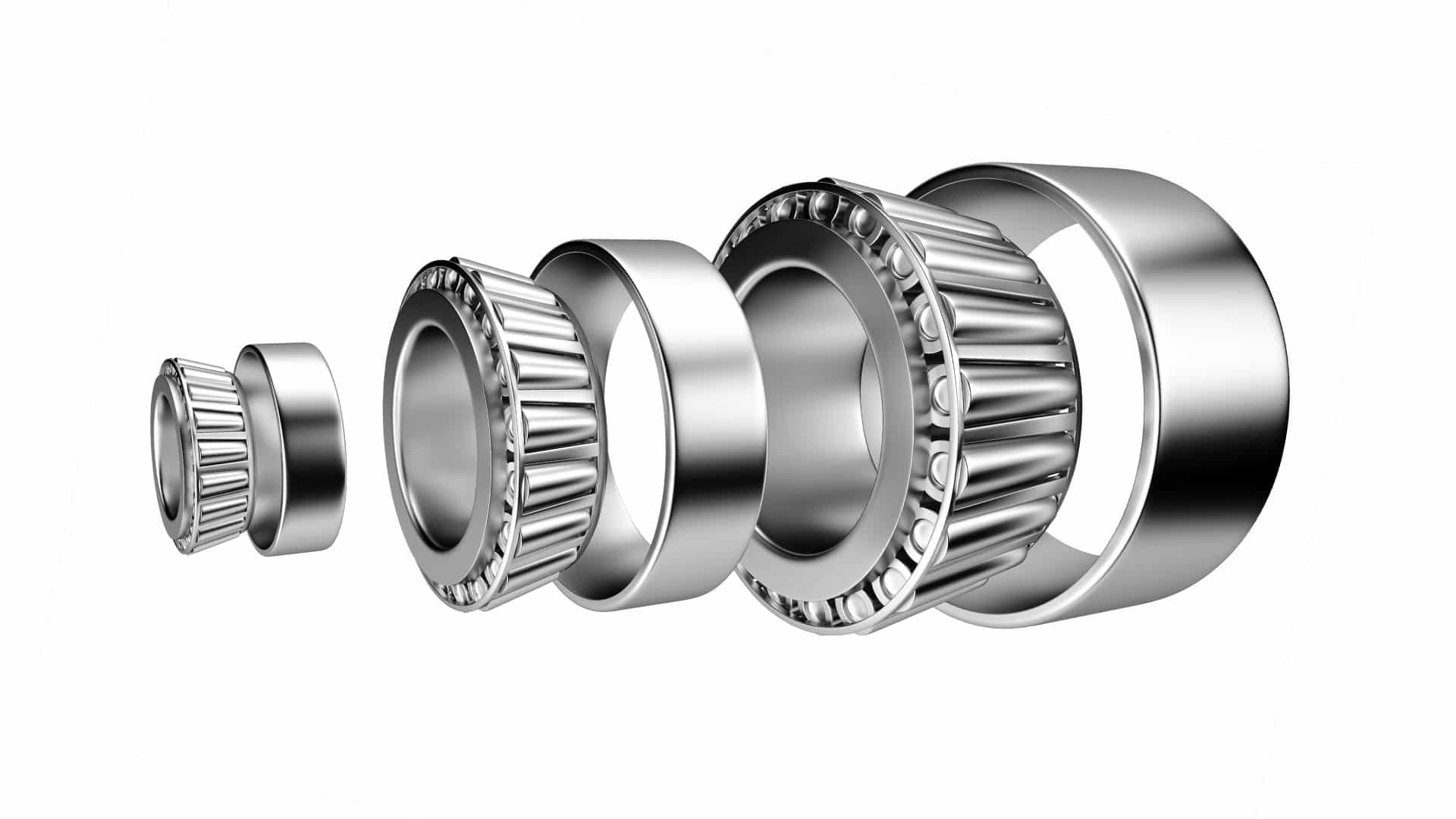Endplay is safer for temperature swings and sealing drag; preload boosts stiffness/accuracy but increases heat—verify in service.
What Is a Tapered Roller Bearing?
A rolling bearing using tapered rollers between a cone (inner ring + rollers + cage) and a
cup (outer ring). The tapered geometry supports combined loads—radial plus axial—
with a controllable endplay/preload. Built as single-row, double-row, or multi-row assemblies for higher capacity.
Typical uses: gearboxes and reducers, wheel hubs, conveyors, large drives, mining/aggregate equipment, wind & industrial machinery.
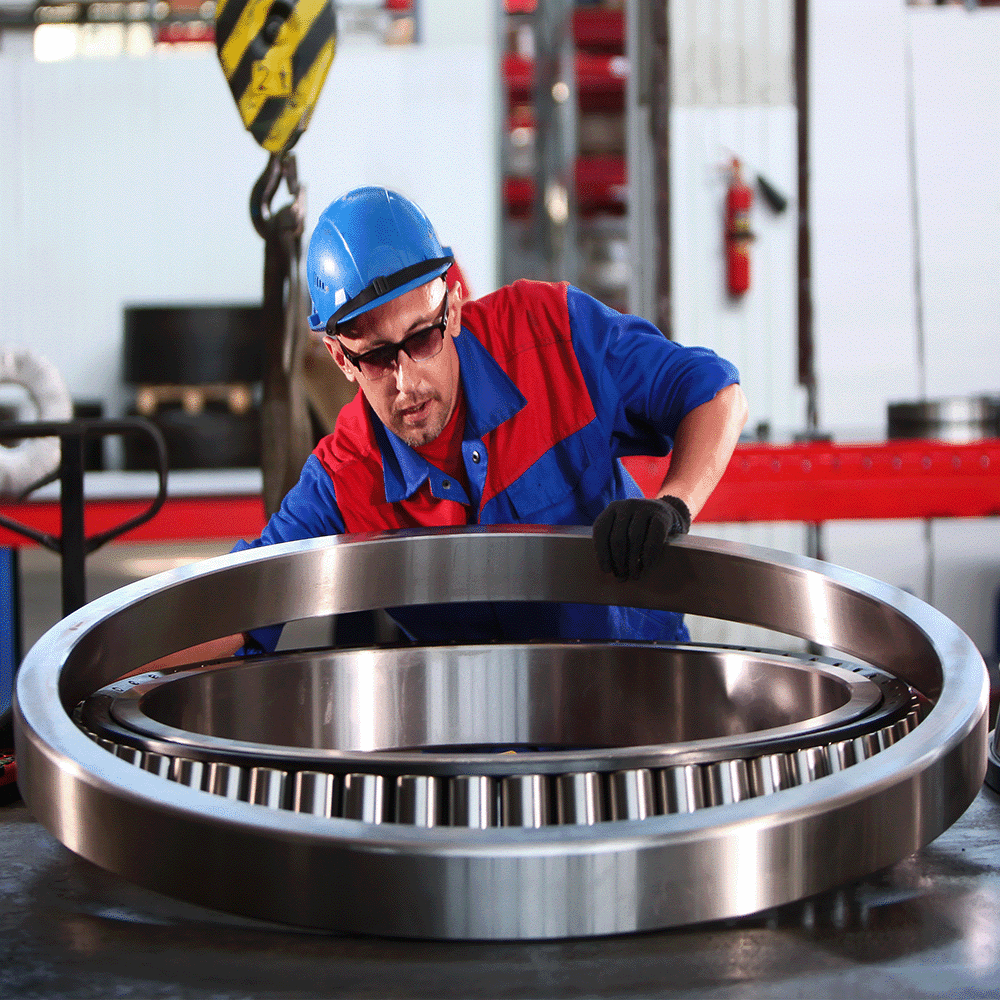
Selection Cheatsheet (Loads, Setting, Environment)
- Axial + radial together? Use TRB. If axial reverses directions, pair single rows in DB/DF or choose double-row.
- Setting strategy: endplay for thermal growth & low heat; preload for stiffness/accuracy (watch temperature).
- Speed/heat: as speed climbs, rib/end contact needs robust film—oil or circulating systems may be better than grease.
- Contamination: favor seals + deflectors; design purge paths; select greases with good sealing behavior.
- Coatings: apply for corrosion/fretting/scuffing resistance—verify thickness so geometry/setting don’t shift.
Environment → Attributes Matrix
| Environment | Material / Coating | Setting | Fits / Mounting | Sealing | Lubricant |
|---|---|---|---|---|---|
| Gearbox (circulating oil) | Through-hardened or case-carburized; optional low-roughness surfaces | Light preload or near-zero endplay for stiffness | Interference on rotating ring; control alignment & shoulder geometry | Labyrinths + deflectors | Oil splash/circulation per OEM viscosity |
| Wheel/Hub (grease) | Low-roughness raceways; corrosion-resistant options in harsh climates | Specified endplay cold to reach near-zero warm | Tight inner fit; correct torque sequence to seat cones | Contact seals; dust shields | High-consistency grease with good film at temperature |
| Washdown / Caustic | Chromium-family or Ni-P on rings/rollers (controlled thickness) | Bias to slight endplay to avoid heat rise with seals | Protect rib contact from jetting; confirm runout after coating | Contact seals + deflectors; avoid direct jets at lips | NSF H1 grease compatible with cleaners |
| High Load / Shock | Hard, low-roughness raceways; case-carburized options | Preload carefully—watch temperature under duty | Robust shoulders; alignment control; avoid edge loading | Deflectors & debris guards | Grease with EP/antiwear; or oil feed if heat is high |
| Higher Speed | Low-roughness; consider micro-textures at rib/roller ends | Minimal preload; aim for stable near-zero running | Precision alignment; balance shafts | Low-drag shields or open + external seals | Light oil or low-bleed high-speed grease; confirm heat |
Common Failures & Diagnostics
Rapid Triage
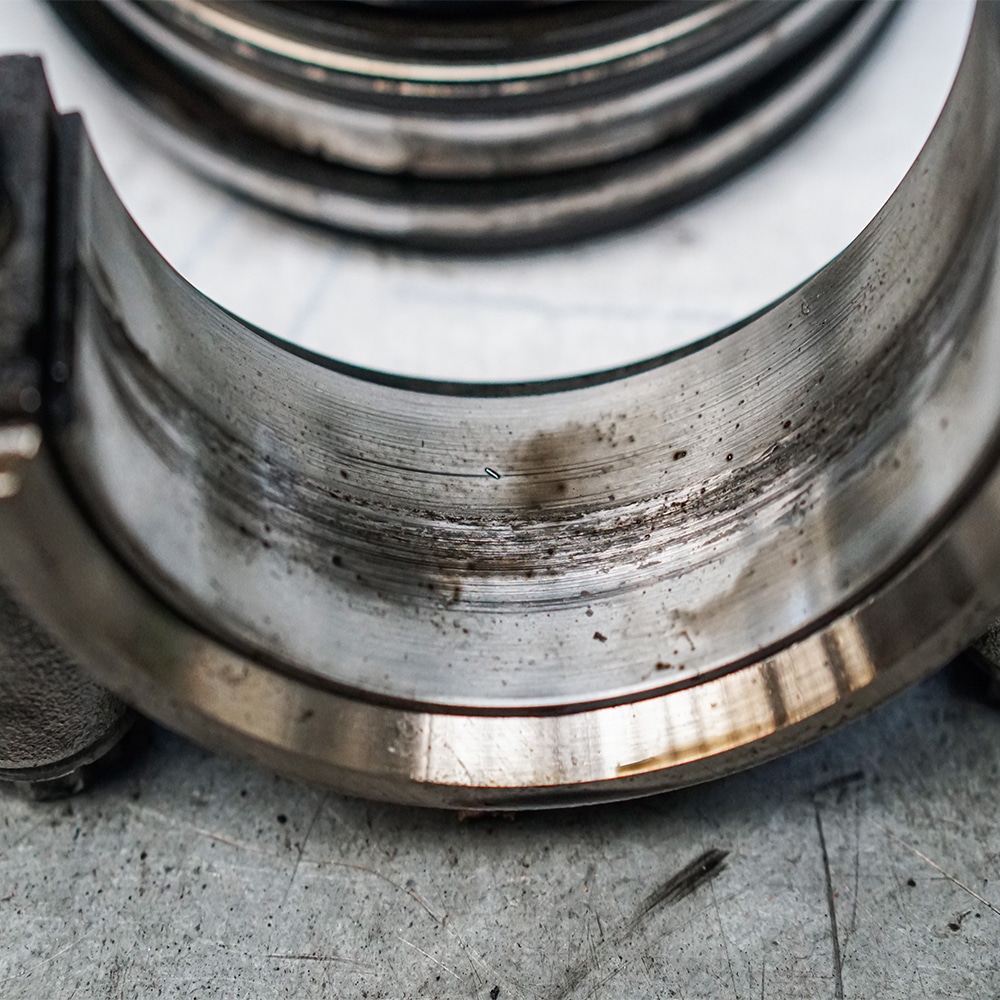
1) Rib / Roller-End Scoring (smearing)
Symptoms
Heat/discoloration near rib face, metallic smear marks, rising torque.
Likely causes
Insufficient film at rib/end contact; preload too high; viscosity too low at temperature.
Checks
Actual endplay/preload (hot and cold), lubricant grade at operating temp, oil delivery.
Non-coating actions
Reduce preload or target slight endplay; increase viscosity or switch to oil circulation; improve cooling/flow.
When surface treatments help
Low-roughness or micro-textured chrome can reduce smearing once film and setting are correct.
Won’t solve
Systemic under-lubrication or chronic over-preload.
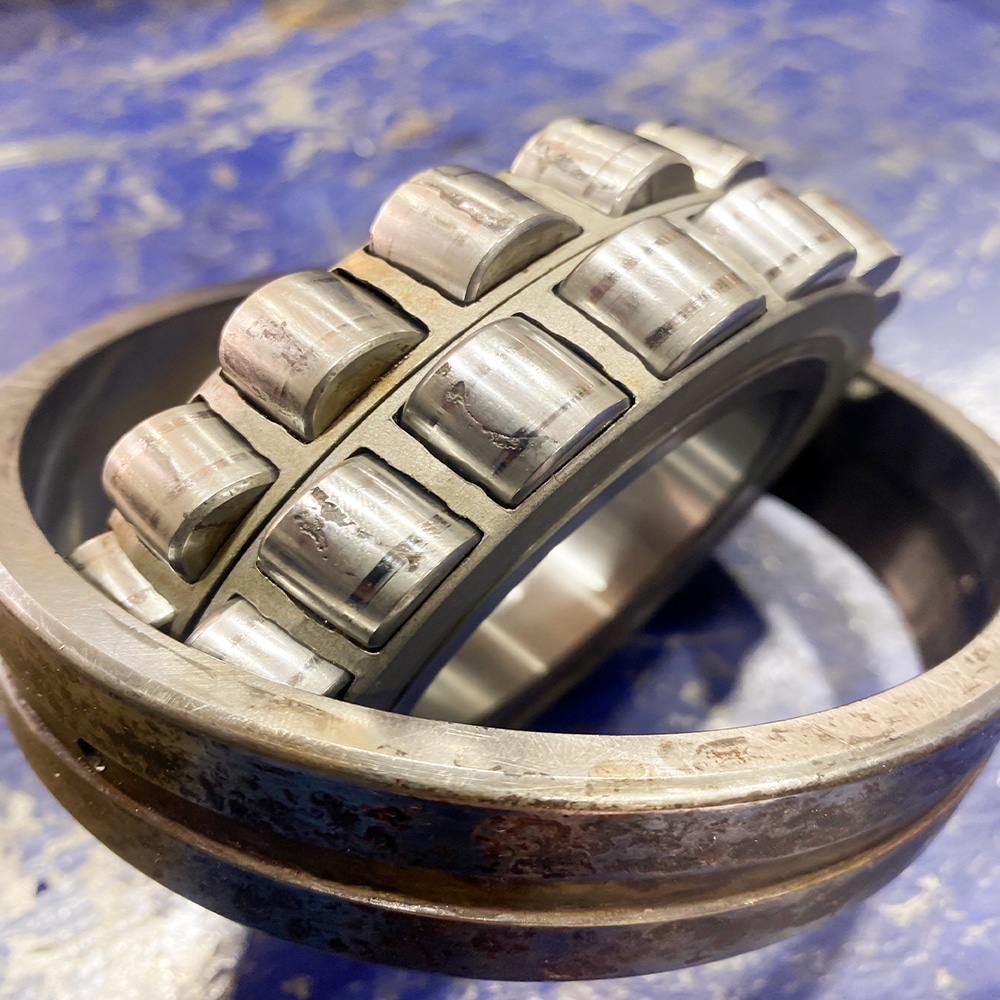
2) Spalling at Raceway / Roller
Symptoms
Flaking, noise, rising vibration; potential axial looseness over time.
Likely causes
Contamination, misalignment, overload, skidding under low film, improper setting.
Checks
Debris in lubricant, alignment, load path vs. contact angle, measured setting vs. spec.
Non-coating actions
Improve sealing/filtration; correct alignment; adjust loads/setting; verify material hardness.
When surface treatments help
Hard, low-roughness chrome can slow abrasive progression—after ingress is eliminated.
Won’t solve
Edge-loaded geometry or misalignment left uncorrected.
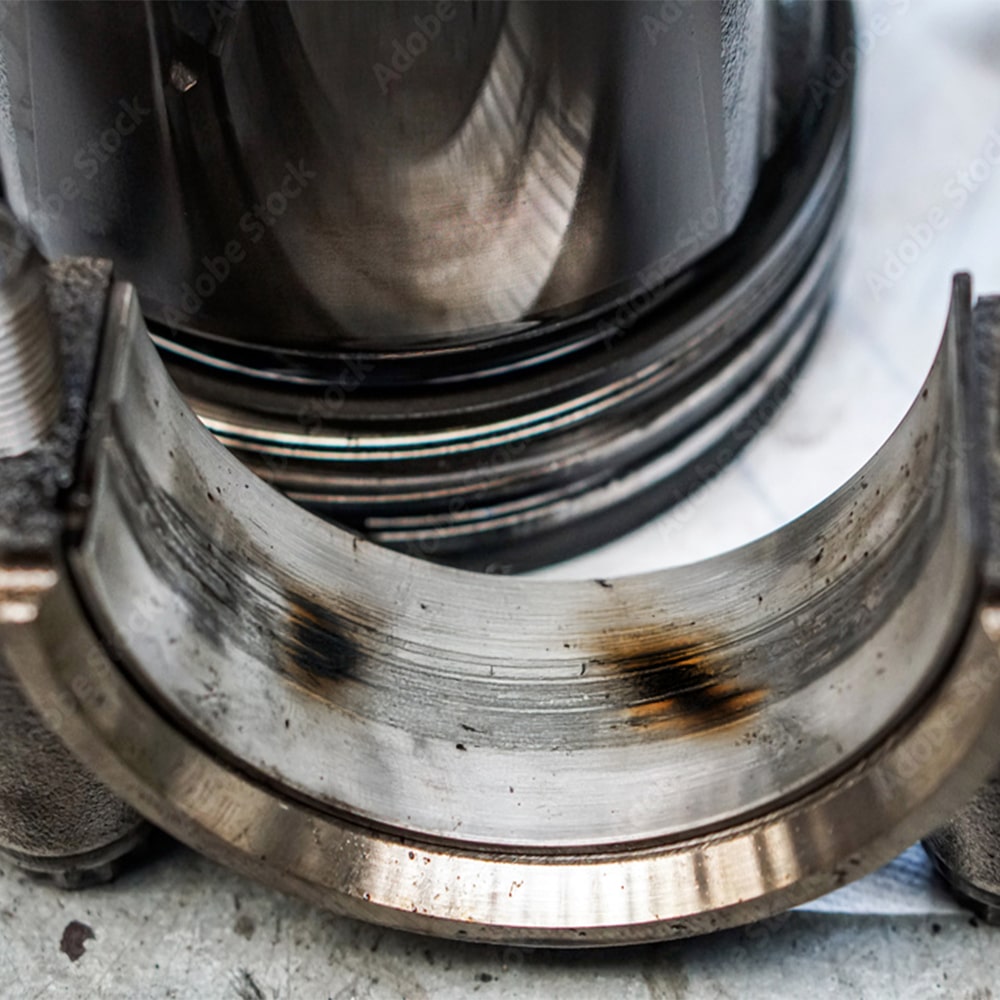
3) False Brinelling / Fretting (idle vibration)
Symptoms
Pitch-spaced dents, oxide coloration, rough start-up.
Likely causes
Micro-motion at rest; low film persistence; loose setting.
Checks
Transport/idle vibration, grease bleed/consistency, measured endplay.
Non-coating actions
Stabilize transport; choose grease with stronger film retention; set endplay properly.
When surface treatments help
Micro-textures can resist adhesion and debris formation once root causes are controlled.
Won’t solve
Large amplitude vibration or gross mis-setting.
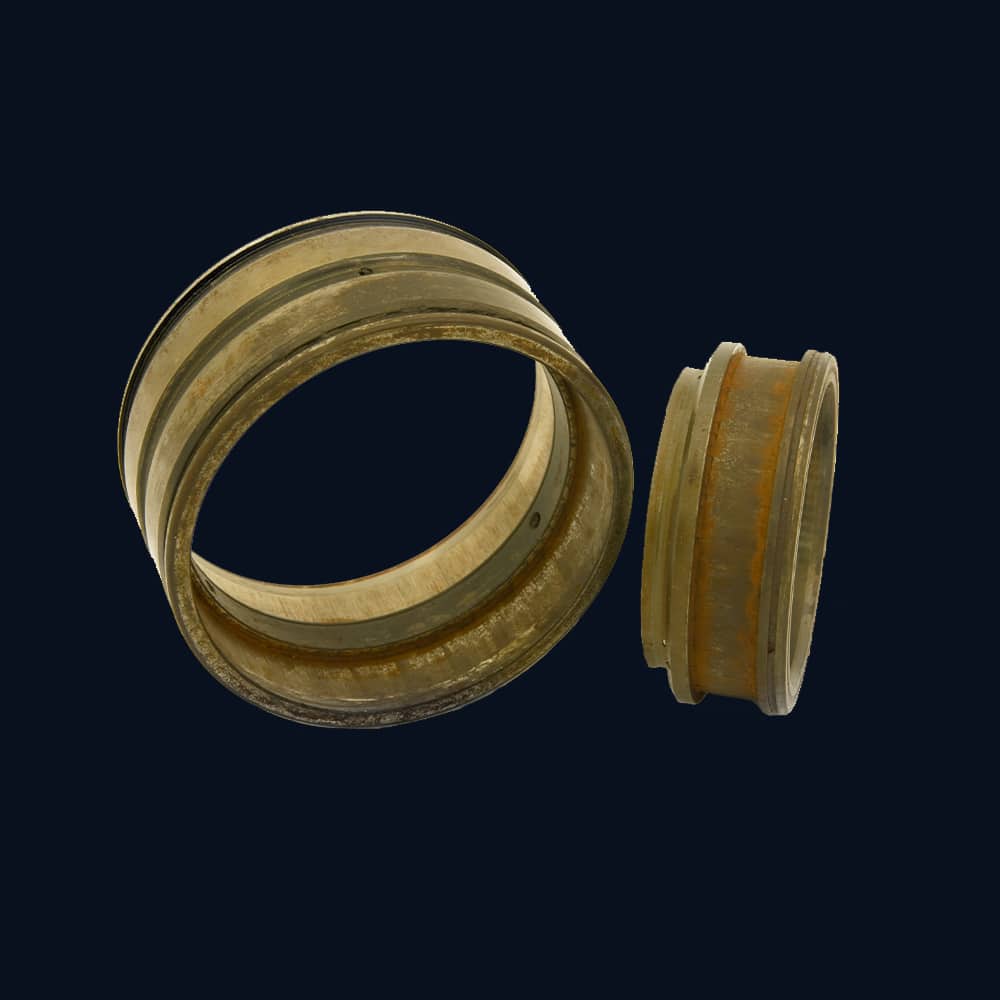
4) Creep at Seats
Symptoms
Polished bands/black oxide dust at ring seats; positional drift.
Likely causes
Insufficient interference on rotating ring; thermal cycles; shaft/housing finish issues.
Checks
Fits vs. catalog; witness marks; surface roughness; temperature profile.
Non-coating actions
Increase interference per duty; improve finishes; consider mechanical stops/locks.
When surface treatments help
Not a primary fix—coatings won’t prevent macro-movement from loose fits.
Won’t solve
Under-fitted rotating rings or large thermal mismatch.
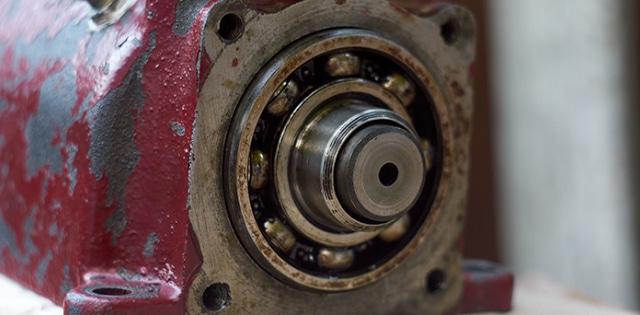
5) Contamination / Abrasive Wear
Symptoms
Gritty feel, growing torque, debris in grease/oil filters.
Likely causes
Ingress from inadequate seals/deflectors; poor filtration.
Checks
Ingress routes; seal condition; filter analysis; upstream guarding.
Non-coating actions
Upgrade sealing/labyrinths; improve filtration; establish purge or oil change intervals.
When surface treatments help
Hard, low-roughness surfaces extend life once contamination is controlled.
Won’t solve
Open ingress or unfiltered fines.
The Big Three: Corrosion, Lubricity, Dimensional Stability
Use surface treatments when they address surface-driven issues (corrosion, fretting, scuffing). Don’t use coatings to replace proper fits, alignment, or correct endplay/preload.
| Concern | What it means | Non-coating controls (first) | When coatings help | Notes |
|---|---|---|---|---|
| Corrosion resistance | Rust/chemical attack at raceways, ribs, shoulders | Seals/deflectors; avoid direct jets; compatible grease; drying | Thin dense chrome, micro-cracked chrome, electroless nickel (Ni-P) | Validate chemistry; measure geometry post-coat |
| Lubricity | Film retention at rib/roller-end & raceway contacts | Correct setting; adequate viscosity at temp; oil feed if needed | Low-roughness or micro-textured chrome to resist smearing/scuffing | Coatings complement, not replace, oil/grease strategy |
| Dimensional stability | Hold geometry/clearance so the set value stays in spec | Proper fits; alignment; account for thermal shift of setting | Controlled-thickness coatings; verify endplay/preload after process | Re-measure after coating to avoid surprise preload |
Case Snapshots
- Reducer input (oil) — Rib scoring at elevated speed.
Actions: raised viscosity index, added directed oil jet, reduced preload.
Outcome: temperature drop of ~12–15°C; no new smear marks after 1k hours. - Wheel hub (grease) — Early spalling and noise.
Actions: set cold endplay per spec, added deflectors, selected grease with better film at temp.
Outcome: service life extended; noise resolved post run-in.
Frequently Asked Questions
They carry axial components and rely on a robust oil/grease film. Low viscosity, high preload, or poor delivery → smearing/scuffing.
They can if thickness alters geometry. Re-measure and re-set endplay/preload after any surface process. Thin dense chromium coatings such as Armoloy or Electrolizing won’t change the set value.
Maybe—but first confirm setting, contamination, and alignment. Grease can’t compensate for mis-set bearings.

Have a failure photo, sound clip, or spec?
Upload it for a no‑fluff diagnostic checklist. We’ll map symptoms → checks → next actions (and only propose coatings when they’re truly indicated).
